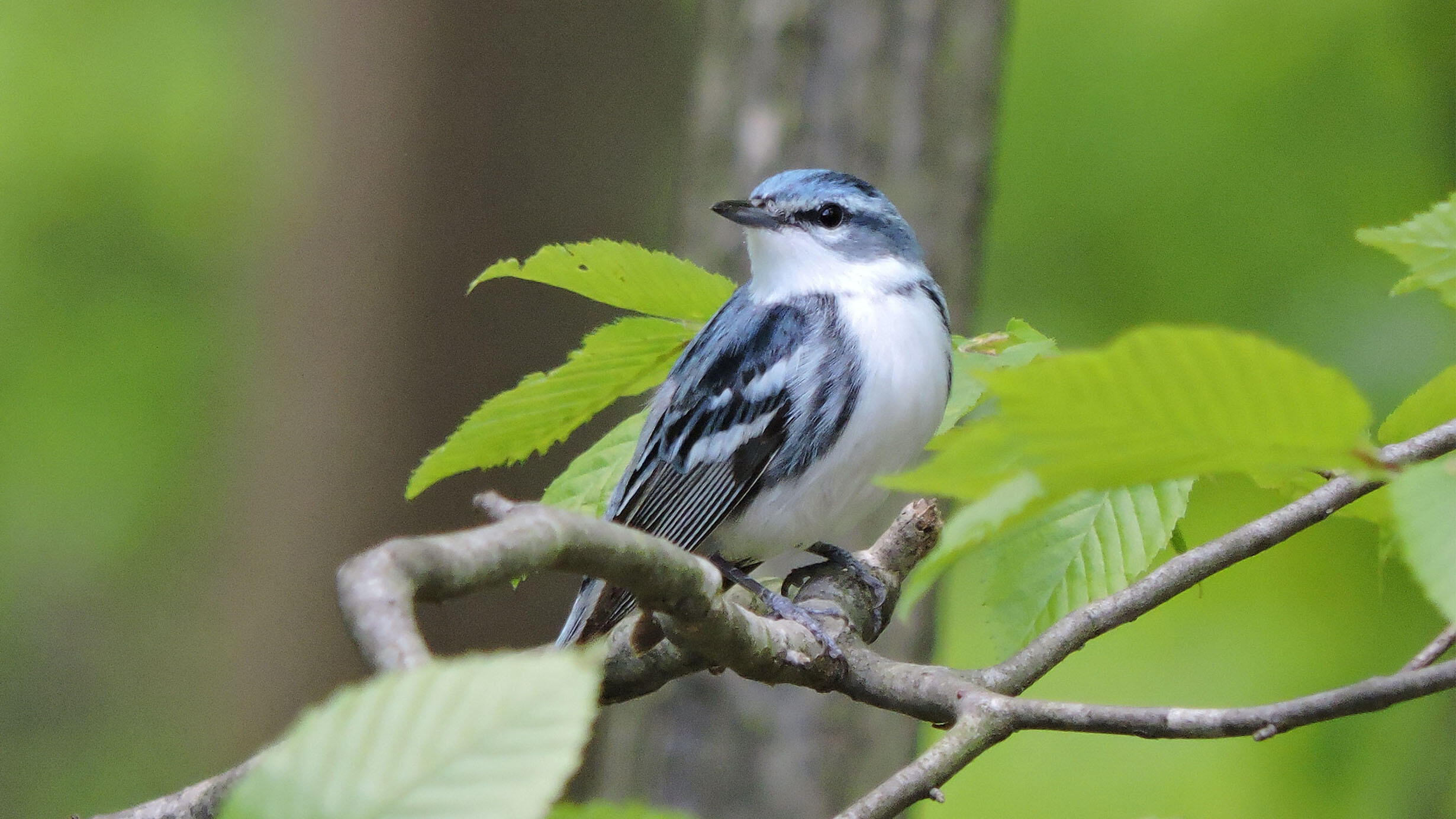 Cerulean Warblers are so named for their distinctive coloring. Males are blue above and have a dark blue neckband and white breast.
Cerulean Warblers are so named for their distinctive coloring. Males are blue above and have a dark blue neckband and white breast.DJ McNeil/U.S. Department of Agriculture/Flickr
One of the more sought-after sightings during the Museum’s Spring Bird Walks in Central Park is the Cerulean Warbler (Setophaga cerulea), a tiny songbird whose spring migration range includes New York City.
“It is a beautiful warbler,” says Paul Sweet, collections manager in the Museum’s Department of Ornithology, who leads bird walks through Central Park. “They are a challenge to spot as they tend to hang out high in the canopy of deciduous trees.’’
True to their name, male Cerulean Warblers are blue above and have a distinctive dark blue neckband and white breast. Females are also colorful, with bluish-green or olive green coloring on their heads and backs and a yellow or white eyebrow stripe.
The birds winter in evergreen forests, woodlands, and shade coffee plantations on the eastern slopes of the northern Andes, from Venezuela and Colombia down through Ecuador and Peru. In spring, they make their way to breeding grounds that span from the southeastern and south central United States to Ontario in the northeast. While Cerulean Warblers can be seen traveling through Central Park, you won't find nesting pairs there. They breed nearby in the Hudson Highlands.
Mates will choose their nesting spot together, looking for a branch where clumps of leaves conceal the nest from above, which can be anywhere from 16 to 115 feet above the ground in tall mature trees including white oaks, cucumber magnolias, and sugar maples.
Females build a cup-shaped nest from bark fibers, grass stems, and mosses, binding it together with spider webs and adding white lichens as a final embellishment. Males have been known to help gather the spider webs, an especially valuable commodity, as females forced to rebuild a nest will gather fresh lining but recycle the spider web.
Always a birder!/Flickr
Female Cerulean Warblers have a curious way of tumbling from their nests that some have compared to bungee jumping: they drop, wings tucked to their sides at first, then spread them to glide parallel to the ground when well below the nest.
Other birds “skydive,” too. Writer Annie Dillard once suddenly came upon a Northern Mockingbird doing such a dive, and concluded, “The fact of his free fall was like the old philosophical conundrum about the tree that falls in the forest. The answer must be, I think, that beauty and grace are performed whether or not we will or sense them. The least we can do is try to be there.”
A version of this story appeared in the Spring issue of the Member magazine, Rotunda.